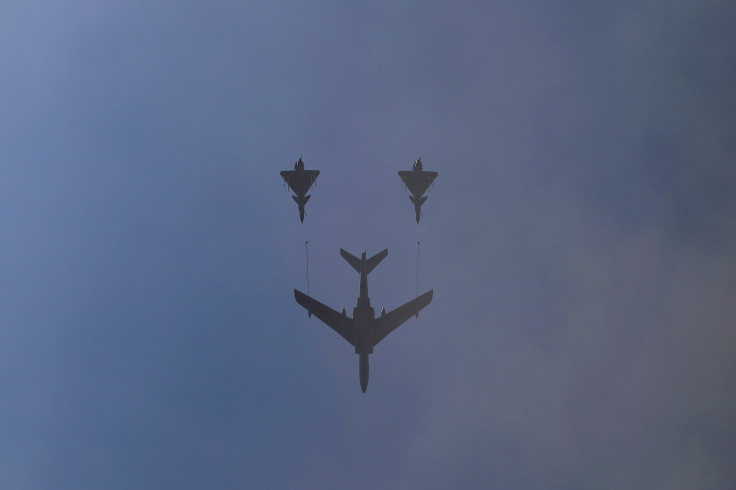Chinese Military Aircraft Breach Korean And Japanese Air Defense Zones Near To Disputed Ieodo Island

Two Chinese military aircraft infiltrated South Korean and Japanese air defenses near a disputed island in the East China Sea, South Korean military officials said Tuesday. The two Chinese aircraft identified themselves shortly after entering into Seoul’s air defense zone, then quickly left before the South Korean air force scrambled their jets. At the same time, the planes from the People's Liberation Army Air Force entered Japan's air defense territory, forcing Tokyo's fighter jets to scramble and intercept them.
"A Chinese military surveillance aircraft and an early warning plane flew into [Korean Air Defenses] over Ieodo, a submerged rock in the East China Sea, without prior notice," the South Korean Joint Chief of Staff said, according to a report from the Korea Times.
"A Chinese military surveillance aircraft and an early warning plane flew into the KADIZ over Ieodo, a submerged... https://t.co/TfrjjbyOUi
— The Korea Times (@thekortimes) February 2, 2016
The small rock in the middle of the East China Sea has been disputed since the Koreans claimed it in 1951, during the Korean War. In 1992, China surveyed the rock for the first time and made equal claims.
Air defense identification zones, also known as ADIZ, are not technically a country's territorial airspace. Another country's aircraft can enter these areas but must first identify themselves to air traffic as part of an early warning system. When an aircraft does not identify itself, this is seen a potential attack and jets are sent up to intercept and investigate.
It’s believed that Tuesday's infiltration was a response to recent talks between Seoul and Washington on the deployment a new air defense system in the region. Beijing is concerned that the deployment of the Terminal high-altitude area defense (THAAD) on the peninsula will threaten China’s security.
"The flight must have been carried out intentionally because there is little chance that state-of-the-art military planes could mistakenly take a wrong route," a Korean official told Korea Times. "Through the flight, China appears to be flexing its military muscle against THAAD deployment."
© Copyright IBTimes 2024. All rights reserved.












